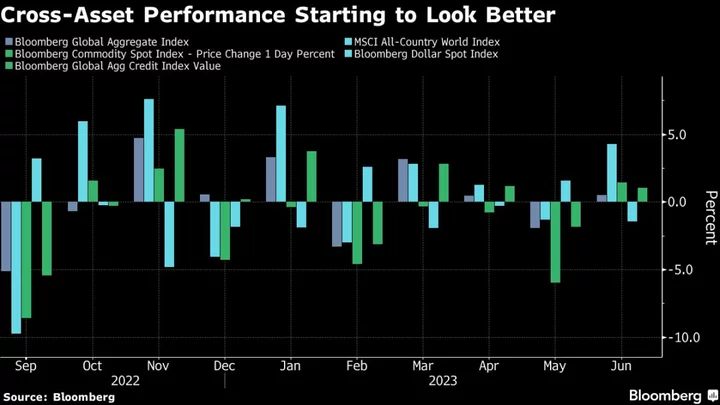Oil pared a two-day advance as traders tempered expectations that OPEC+ will intervene in the market to bolster prices with weakening spreads and anticipated stockpile builds.
West Texas Intermediate eased less than 1% to near $77 a barrel after rising more than 6% over the prior two sessions on speculation that Saudi Arabia and its allies may choose to deepen supply cuts at their next meeting on Nov. 26. US oil options point to many traders increasing bets on this outcome in a bid to reverse a recent slide in prices.
Between now and the weekend meeting, traders will get fresh insights into US fundamentals with the release of official figures on crude and product stockpiles. Nationwide crude inventories have expanded for the past four weeks to the highest since August. There’s also a US holiday that is likely to curtail trading activity in the second half of the week.
An expected buildup in US stockpiles, as well as the contango structure of WTI’s front-month spread, “are keeping a lid on prices,” said Dennis Kissler, senior vice president for trading at BOK Financial Securities. “But its mostly a choppy trade until we see what OPEC+ is going to do.”
Read more: Oil Traders Struggle as Decades-Old Signal of US Market Weakens
Indications that non-OPEC crude supplies are expanding have buffeted prices in recent weeks, with the gains in production offsetting the impact of collective and voluntary reductions agreed by the Organization of Petroleum Exporting Countries and its allies, including Russia. Crude exports from the latter fell to a three month-low ahead of the meeting.
In the Middle East, Hamas — designated a terrorist organization by the US and European Union — said it was close to reaching a “truce agreement” in talks with Qatar and Israel, in a sign that suggests discussions over freeing some hostages held by the militant group are progressing. Even with those discussions ongoing, the fighting in Gaza rages on.
To get Bloomberg’s Energy Daily newsletter into your inbox, click here.









